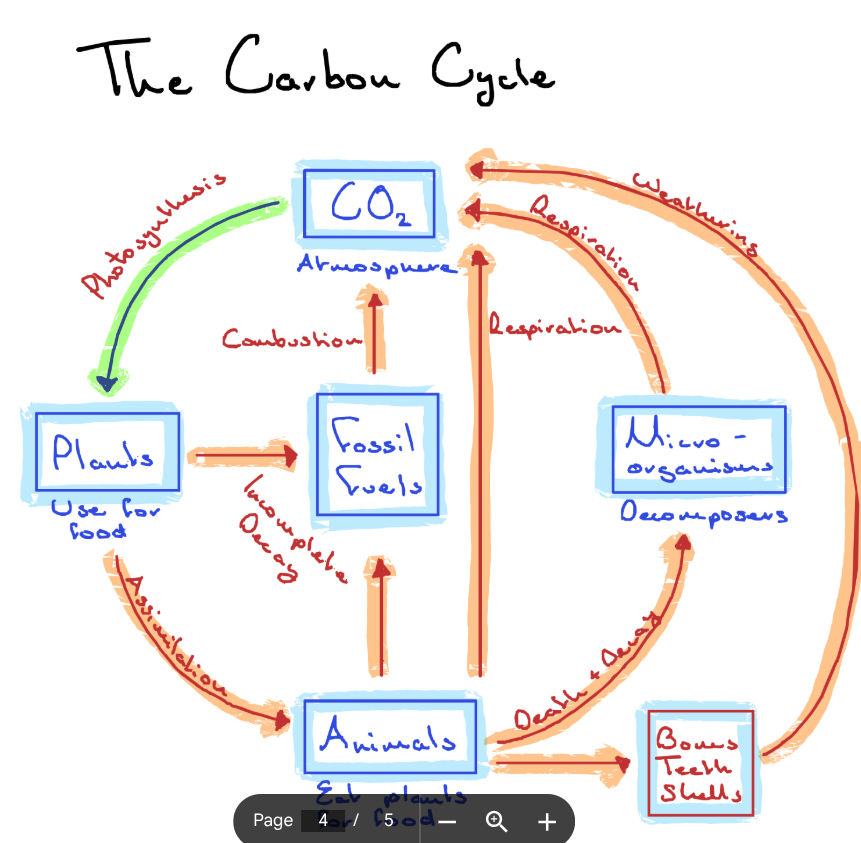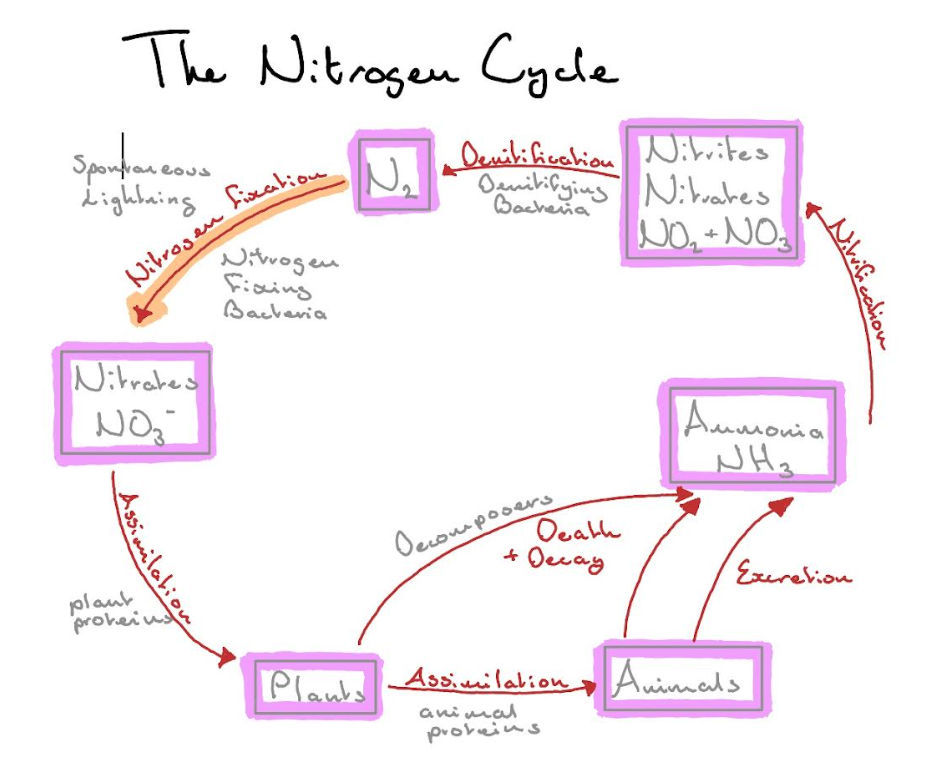Nutrient Recycling
1/8
Earn XP
Description and Tags
Ecology Chp 4+5
Name | Mastery | Learn | Test | Matching | Spaced |
|---|
No study sessions yet.
9 Terms
Nutrient recycling
the conversion of mineral elements such as carbon and nitrogen back and forth between abiotic and biotic for use in the ecosystem
Carbon cycle
the way in which carbon is taken from and added to the environment by organisms
Describe the main steps in the carbon cycle:
plants take in CO2 through stomata for photosynthesis to make food (carbohydrates)
plants die and either:
incomplete decay leads to the formation of fossil fuels
they are consumed by animals
animals consume plants and respire which releases Co2
the animals die and either:
incomplete decay leads to the formation of fossil fuels
they are decomposed by micro-organisms, which release CO2 as they respire
bones, teeth and shells decay by slow weathering to produce CO2
Carbon cycle diagram:

Why do we need the carbon cycle?
supports photosynthesis + respiration
maintain a balance, so it does not run out
Describe the main steps in the nitrogen cycle:
nitrogen fixation: nitrogen gas is ‘fixed’/ converted into nitrates by nitrogen fixing bacteria
can also be converted into nitrates by lightning which splits nitrogen molecules allowing them to join with oxygen
nitrates are absorbed and assimilated into plant proteins
plants die and are either
eaten by animals and assimilated to form animal proteins
decomposed by decomposing bacteria, which release ammonia into the soil
animals either
excrete ammonia in urea
decompose by decomposers, which release ammonia into the soil
nitrification: nitrifying bacteria convert ammonia into nitrite then nitrate
some of this nitrate is absorbed and assimilated by plants
denitrification: denitrifying bacteria convert nitrates back into nitrogen gas
Nitrogen cycle diagram:

Why do we need the nitrogen cycle?
to change nitrogen into a usable form for organisms
to maintain a balance
Why do organisms need nitrogen?
to make proteins and enzymes